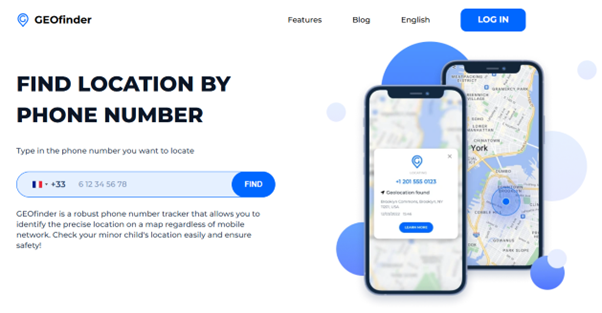What to Watch Before Taking Your Child to a Podiatrist for Foot Pain
Many parents are caught off guard when their child suddenly starts complaining of foot discomfort. Whether it’s heel pain after soccer practice or limping around the house, these concerns should never be brushed aside. Foot issues in children can develop silently and only become noticeable when pain interferes with daily activities.
I. Introduction
It’s natural to assume your child’s foot pain is temporary or part of growing up. However, persistent or worsening symptoms may indicate more serious underlying issues that require professional attention. According to the American Academy of Pediatrics, foot and ankle issues in children can impact development and overall mobility if not treated early.
Early detection and treatment of pediatric foot problems ensure that your child’s mobility and development stay on track. A qualified child podiatrist can assess the cause, recommend the appropriate intervention, and prevent future complications. Addressing foot pain in children early is crucial for maintaining healthy movement, posture, and confidence.
II. Identifying Concerning Symptoms
A. Persistent foot pain
If your child frequently complains about aching feet, especially after low-impact activities or even while at rest, it’s a strong indicator that something’s not right. Persistent foot pain should not be ignored, as it may be a symptom of a biomechanical issue, inflammation, or early-stage injury. Consulting a podiatrist for foot pain at this stage can help identify whether the discomfort stems from overuse, flat feet, or something more serious.
Long-lasting discomfort is one of the top signs your child needs a podiatrist. Especially when rest, massage, or better shoes don’t ease the pain, seeing a kids’ foot specialist becomes essential. They can examine your child’s gait and conduct diagnostic tests to determine the underlying cause.
B. Visible foot deformities
Does your child’s foot look different compared to their peers? Conditions such as high arches, flat feet, or in-turned toes can be signs of pediatric foot problems. While some irregularities resolve naturally with age, others may require early correction to prevent pain or mobility issues later on.
A child podiatrist is trained to evaluate these structural abnormalities and provide foot pain treatment for kids that’s tailored to their growing bones. Waiting too long may result in the need for more invasive interventions or permanent misalignment issues.
C. Limping or walking issues
One of the clearest warning signs that your child needs a podiatrist is limping or irregular walking patterns. If your child begins walking on their toes, avoids putting pressure on one foot, or their feet point outward or inward excessively, these may signal developmental concerns.
Don’t rely on internet advice or wait for it to resolve on its own. Limping or compensating movements often indicate pain or muscular imbalances that only a podiatrist for foot pain can properly diagnose. Early assessment is vital to avoid joint strain, muscle fatigue, or posture-related concerns.
III. At-Home Checks You Can Do
A. Footwear wear patterns
Before scheduling an appointment, one helpful step is to inspect your child’s shoes. Uneven wear on the soles, especially along the edges or heels, can indicate gait problems or uneven pressure distribution. This is a subtle but effective way to tell if your child has foot problems.
If you notice rapid shoe breakdown, a visit to the best podiatrist for kids with foot pain may be warranted. These professionals can assess whether custom orthotics or physical therapy is needed to correct alignment and prevent future injury.
B. Arch shape observation
Take a closer look at your child’s arches when they’re standing flat-footed. Do they appear collapsed? Do the feet roll inward? These can be signs of flat feet or fallen arches, which can contribute to ongoing discomfort.
Children’s foot pain related to arch development is common but shouldn’t be ignored. A pediatric podiatrist can evaluate how your child’s feet are developing and determine whether intervention is needed. Early identification can prevent chronic foot pain and even issues with the knees and hips.
C. Toe alignment check
Misaligned toes, overlapping digits, or curled toes can also signal underlying foot issues. While they may seem harmless at first, poor toe alignment can lead to pain while walking or running.
If your child complains of discomfort while wearing closed shoes, this may be the root cause. Consulting a podiatrist for foot pain can help determine if corrective devices, exercises, or footwear adjustments are required to avoid worsening problems.
IV. When to See a Podiatrist for Foot Pain
A. Pain affecting mobility
One of the most definitive signs it’s time to seek expert care is when your child’s pain starts interfering with their ability to walk, run, or play. Kids are naturally active, so reluctance to move is a red flag. Even minor hesitation can indicate deeper issues.
If you find yourself wondering, “Should I take my child to a podiatrist?”, the answer is yes, especially if their mobility is impacted. A qualified podiatrist for foot pain can perform a comprehensive exam and get your child back on their feet, comfortably and safely.
B. Symptoms lasting weeks
While temporary aches can happen after high activity, ongoing symptoms that last beyond two weeks should be taken seriously. This includes pain, stiffness, or swelling that doesn’t go away with rest or at-home care.
Delaying medical attention may worsen the condition, especially if it involves soft tissue injury or inflammation. It’s important to know when to take your child to a podiatrist; prolonged symptoms are a clear signal.
C. Issues worsening over time
Has the pain been gradually increasing? Is your child now complaining about pain during activities that previously didn’t cause any discomfort? These are signs of progressive issues that may require medical intervention.
Consulting with a kids’ foot specialist early helps avoid long-term damage. Whether it’s a growth plate injury, tendonitis, or a biomechanical concern, early treatment provides better outcomes and a faster return to normal activity.
V. Conclusion
Parents know their children best. If something feels off with the way your child walks, runs, or behaves after an activity, it’s okay to trust your gut. Seeking a podiatrist for foot pain doesn’t mean you’re overreacting; it means you’re being proactive about your child’s health.
Foot pain in children isn’t something to ignore or delay addressing. Early diagnosis and treatment by a qualified child podiatrist can make a huge difference in your child’s comfort and development.
Keep track of when the symptoms began, what seems to trigger them, and how your child responds to rest or treatment. This record will be helpful for the podiatrist and speed up the diagnostic process.
Whether it’s persistent pain or a noticeable change in your child’s walking habits, documentation can help the best podiatrist for kids with foot pain tailor the most effective plan of care.
When searching for a provider, look for someone experienced with pediatric foot problems and children’s foot pain specifically. Ask about their experience with developmental conditions and treatments like orthotics or physical therapy.
Your child deserves to see a specialist who understands the unique needs of growing feet. Taking action now can prevent more serious issues later and ensure your child moves through life pain-free and confident.












